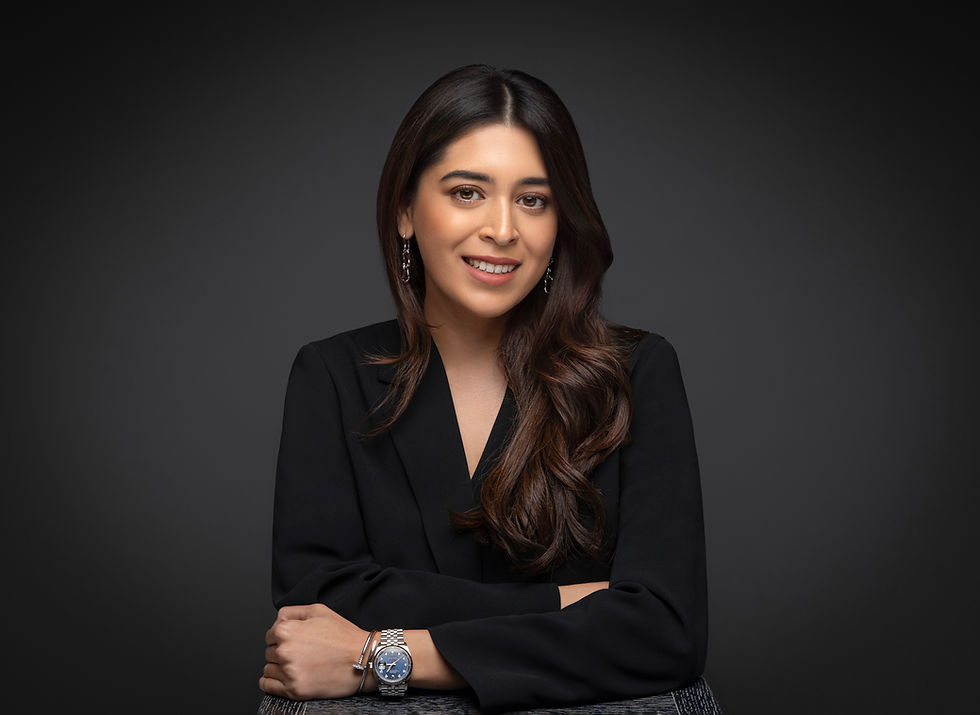Capturing Dubai's Skyline: Tips and Tricks for Photographers
- Sonika

- Feb 14, 2023
- 3 min read
Dubai's skyline is a marvel of modern architecture, with iconic landmarks such as the Burj Khalifa, Burj Al Arab, and Dubai Marina. Photographers from around the world come to Dubai to capture the city's skyline, and with the right techniques, you can create stunning images that stand out from the crowd. In this article, we'll explore some advanced tips and techniques for capturing Dubai's skyline.

Use a sturdy tripod
When it comes to capturing the Dubai skyline, one of the most critical tools in your arsenal is a sturdy tripod. A tripod keeps your camera steady and minimizes camera shake, resulting in sharp and detailed images. However, not all tripods are created equal, and investing in a high-quality professional tripod can make all the difference in the quality of your images. Consider the material, load capacity, height, and weight of the tripod when choosing the best option for your photography needs. Some of the best professional tripods for capturing the Dubai skyline include the Gitzo Series 3 Systematic Tripod, Manfrotto MT055CXPRO3 Carbon Fiber Tripod, and Really Right Stuff TVC-24L Versa Series 2 Tripod. These high-end tripods offer exceptional stability, vibration reduction, and load capacity, providing plenty of height for capturing the city's skyscrapers.

Shoot in RAW format
Capturing the Dubai skyline requires attention to technical details, and shooting in RAW format is one such aspect that can make a significant difference. RAW files contain all the image data captured by your camera's sensor, making them an ideal format for post-processing. Unlike JPEG files, which are compressed and may lose data during processing, RAW files retain all the original image information. This means that you have more control over the final image in post-processing, allowing you to adjust exposure, color balance, and other settings without sacrificing image quality. However, shooting in RAW format does come with some downsides. RAW files take up more space on your memory card and require more processing power for editing. So, make sure you have enough storage and a powerful computer to handle the additional data. Shooting in RAW format is essential for professional photographers who want to capture the Dubai skyline's intricate details accurately. With RAW files, you can fine-tune your images, adjust the highlights and shadows, and even recover details that may have been lost in JPEG files. So, if you want to take your skyline photography to the next level, make sure to shoot in RAW format.

Bracket your shots
When shooting a high-contrast scene like the Dubai skyline, it's essential to bracket your shots. Bracketing involves taking multiple shots of the same scene at different exposures, then merging them together in post-processing. Bracketing helps you capture detail in both the shadows and highlights of your images, resulting in a more balanced and dynamic final image.

Use a polarizing filter
A polarising filter is a must-have accessory for capturing the Dubai skyline. A polarizer reduces glare and reflections, making the colors of the sky and buildings more vivid and saturated. A polarizer also enhances the contrast between the sky and clouds, creating a more dramatic effect. Make sure to use a high-quality polarizer that matches the diameter of your lens.

Experiment with different lenses
To capture stunning and varied images of the Dubai skyline, it's worth experimenting with different lenses. Wide-angle lenses are ideal for capturing the entire skyline in a single shot, providing a sense of scale and grandeur. Telephoto lenses, on the other hand, allow you to zoom in on specific details and buildings, capturing intricate and fascinating aspects of the skyline that might otherwise go unnoticed. Tilt-shift lenses are perfect for creating unique perspectives by giving you control over the plane of focus and minimizing distortion. By using a range of lenses, you can create a diverse and captivating collection of images that showcase the many facets of this stunning skyline.

Learn advanced post-processing techniques
To truly bring out the best in your images, it's worth investing time in learning advanced post-processing techniques. These techniques will help you fine-tune your images and bring out their full potential. Start with the basics, such as adjusting levels and curves, tweaking color balance, and sharpening your images. Once you're comfortable with these techniques, explore more advanced options like dodging and burning, luminosity masking, and HDR processing. These methods allow you to create unique and impactful images that truly stand out from the crowd. By taking the time to master these techniques, you'll be able to produce images that not only capture the beauty of the Dubai skyline, but also showcase your own artistic vision and technical skill.
In conclusion, capturing the Dubai skyline requires both technical expertise and creative vision. By using a sturdy tripod, shooting in RAW format, bracketing your shots, using a polarizing filter, experimenting with different lenses, and mastering advanced post-processing techniques, you can create stunning and memorable images of this iconic city.




Comments